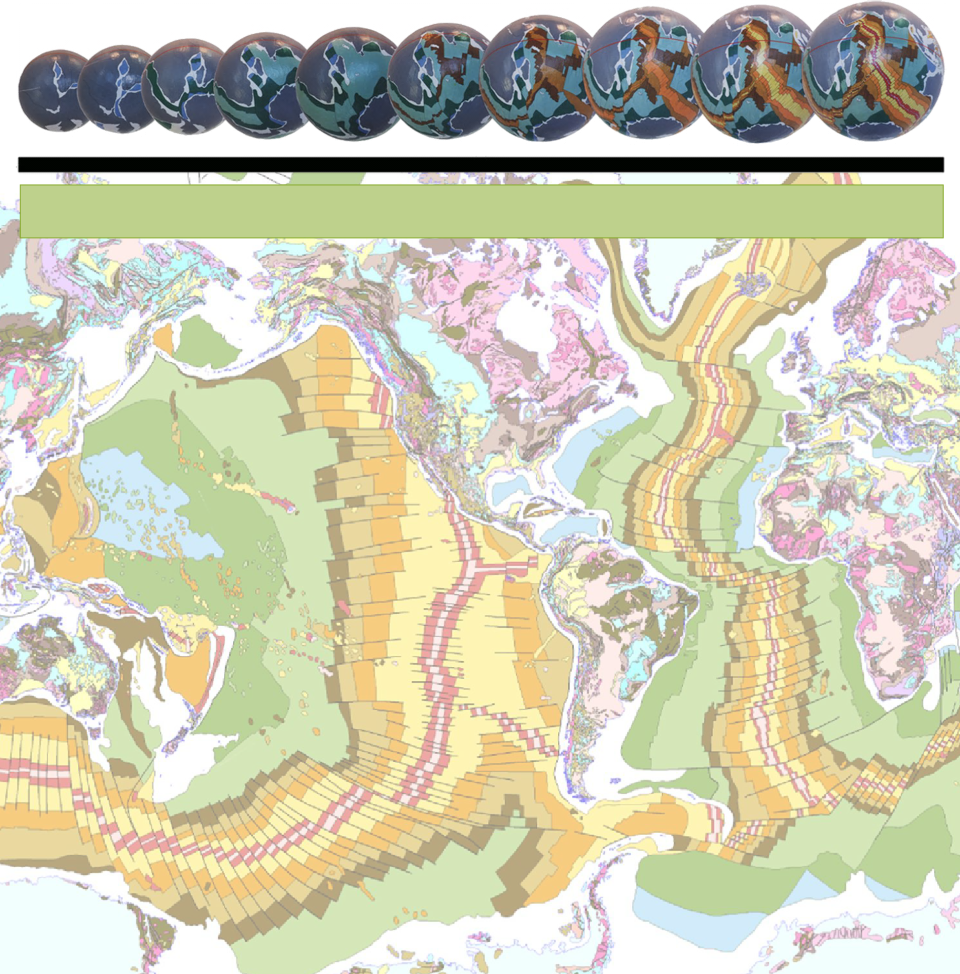

OBSERVATIONS FROM HISTORICAL STUDIES
Although there is a moderate amount of literature on the subject of Earth expansion, the historical small Earth models of Hilgenberg and Vogel, as well as other lesser published models, represent essentially the sum-
These models were developed and the majority conceived prior to or during the early stages of investigation into seafloor spreading and prior to the complete and accurate geological mapping and age dating of the oceans. Most of these early reconstructions of continents on small Earth models suffered from a lack of precise cartographic methods, as well as constraint of both ancient Earth radius and crustal assemblage. Only Vogel was fortunate enough to have been able to use published seafloor mapping to constrain crustal assemblages on his models.
Vogel concluded from his modelling studies that:
- At a reduced Earth radius of between 55 to 60 percent of the present radius, the continental outlines can be neatly fitted together to form a closed crust.
- The positions of the different continents with respect to each other remain generally constant, with their separation caused by a radial expansion of the Earth.
- The cause of the movements of continents has resulted from an accelerating increase in Earth radius with time, in accordance with seafloor spreading.
- It is theoretically possible for the continents, without the continental shelves, to fit together on an even smaller Earth globe calculated to be approximately 40 percent of the size of the present Earth.
What should be noted here is that these early researchers all showed that, like Wegener and others had suggested for the Atlantic Ocean, if each of the oceans were removed and the remaining continents were physically fitted together they would neatly envelope the Earth with continental crust on a small Earth globe some 50 to 55 percent of its present size. This coincidence led both Hilgenberg and Vogel, and similarly Carey from his early Continental Drift studies and Jan Koziar from his extensive mathematical and crustal modelling, to come to similar conclusions that:
“Terrestrial expansion has brought about the splitting and gradual dispersal of continents as they moved radially outwards during geological time”.